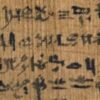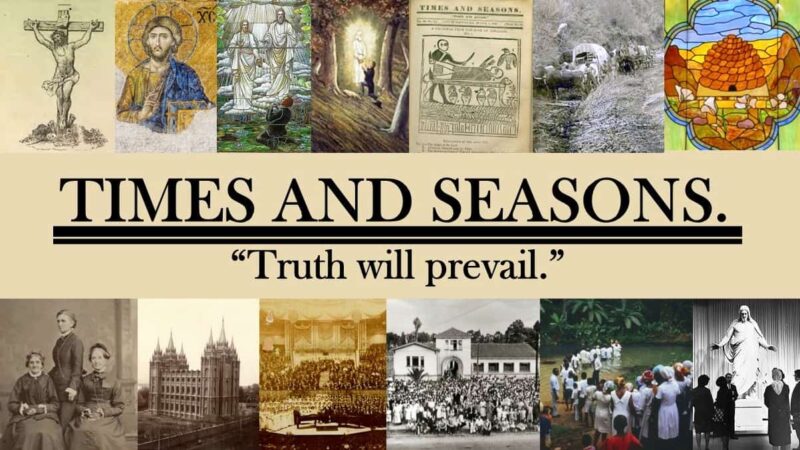Author: Jonathan Green
-

Review: Christopher Blythe, Terrible Revolution: Latter-day Saints and the American Apocalypse
Christopher James Blythe. Terrible Revolution: Latter-day Saints and the American Apocalypse. New York: Oxford University Press, 2020. ISBN 978-019-7695159. Terrible Revolution traces the central place of apocalypticism in LDS history and belief along multiple axes. Chronologically, the book traces the varieties of apocalypticism from the American religious context of Joseph Smith’s earliest activity through the…
-
The original sins of Mormon blogging
If the discussions here and at sites like this one are sometimes less than satisfactory, it’s partly because of unstated conventions and informal norms that got started nearly two decades ago and that we’re often barely conscious of today. Two especially need to be rethought.
-
How I taught the Proclamation on the Family
As the Sunday School president at the time (December 2021), I told the teachers in advance that I wanted them to do two things. First, I wanted them to teach the doctrine. Second, I wanted them to teach it so that whoever their students were and whatever their situation, they would feel welcome and accepted.…
-
Missions and memory
People keep asking me for proof that the irritating tics in Mormon writing I’ve mentioned actually exist. In that respect, Taylor Kerby’s post over at BCC is useful in a couple of ways.
-
Everything wrong with Mormon writing (I)
Collectivize the ignorance, individualize the enlightenment.
-
I once was Lehi
In the scriptures, we find (among other things) stories we slip into in order to make sense of our lives. We are Adam and Eve, Joseph preparing for a famine, David facing Goliath, Alma the Younger looking back at his choices. We teach people to seek answers by earnestly praying like Joseph Smith in the…
-
Christian Nationalism
One type of journalism I particularly enjoy not reading is the LDS-shaped hole in long-form articles about the agonies of American Christianity.
-
Notes on Revelation
[As I was going through my files, I found this draft that written four years ago. As it has about 24 hours of relevance left, I’m publishing it now. Happy New Year.] When I teach Revelation 1-11 to my youth Sunday School class, I’ll probably start off by saying something about gasoline.
-
Prosper in the Land
In a long-ago post, John Fowles referred to a Book of Mormon couplet as the book’s thesis: Inasmuch as ye shall keep my commandments ye shall prosper in the land; but inasmuch as ye will not keep my commandments ye shall be cut off from my presence (2 Nephi 1:20)
-
Book of Mormon historical revisionism
As we study the Book of Mormon next year, there will be suggestions to read between the lines, to resist the surface or official or dominant reading, to see through the authoritative narrative to the unvarnished reality behind it – like the standard works, these suggestions too come around every four years. The instinct is…
-
Reading the Book of Mormon in wartime
Next year, the focus of scripture study in Sunday School and Seminary classes will cycle again to the Book of Mormon. Compared to previous years when the Book of Mormon has been the focus, war will loom larger in the background than it has since at least the 1960s, even including the messy realities of…
-
Five things to know about MacKay and Belnap’s “Pure Language Project”
First and foremost: “The Pure Language Project” in the current volume of the Journal of Mormon History is the best explanation to date of the significance of the documents relating to the Egyptian papyri (referred to collectively as the “Egyptian Language Documents,” or ELD for short) for the development of Church doctrine and Joseph Smith’s…
-
Ward capacity
It seems like ‘church capacity’ would be a useful concept. In parallel to ‘state capacity,’ church capacity might describe the ability of a religious organization to carry out its missions, promote its doctrine, gain adherents, participate as an entity in broader society and accomplish its other purposes.
-
The Angel and the Hermit, and church governance
The Gesta Romanorum, a medieval collection of moralizing stories, includes the tale of a hermit who despaired at the world’s injustice and resolved to abandon his calling.
-

Translation theory won’t decide your polemic argument
One of the recurring irritations of reading apologetic, polemic, or scholarly work in Mormon Studies addressing Joseph Smith’s translations of ancient scripture is that the authors nearly always ignore the perspective of practicing translators and the field of translation studies, instead basing their analyses in simple notions of linguistic equivalence that may still prevail in…
-

“As far as we have any right to give.” A Note about Abraham Facsimile 2
The re-use of characters from JSP IX on Facsimile 2 doesn’t mean that the marginal characters in Abraham manuscripts A-C weren’t used in the translation. I think it actually makes it more likely that they were. Before I unpack what this means, you might want to read the published version of Tim Barker’s 2020 FAIR…
-
T&S welcomes guest poster Ivan Wolfe
If you’ve been following the LDS blogging world for the last 20 years or so, you’ll recognize Ivan Wolfe from posts and comments at various blogs. Ivan lives in Arizona, where he teaches writing at ASU. He has published essays on several topics I’d like to hear more about, including Battlestar Galactica and Philosophy, The…
-
About that FEC fine
It’s true: In March 2022, the FEC fined the DNC and Hillary Clinton’s presidential election campaign for incorrectly declaring payments to an oppo research firm involved with the Steele dossier. As a Democratic voter in 2016, I must say that news of the fine means…absolutely nothing to me. The stakes in the 2016 election were…
-
Looking at Hamline in the mirror
If you’ve followed the controversy at Hamline University (located in St. Paul, Minnesota) in recent months with BYU in the back of your mind, you might have felt a degree of familiarity.
-

Linguistic notes on the 1843 letter to the Green Mountain Boys
Joseph Smith’s 1843 appeal to the Green Mountain Boys, ghostwritten by W. W. Phelps and published in (the original) Times and Seasons contains a series of foreign language quotations that are interesting not only because they include using the GAEL as a source for Egyptian.
-

IX. Joseph the Seer
How did Joseph Smith and his associates create a translation that shows knowledge of a grammar that presumes the existence of the translation? Given what we know of the documents and the timeline for the translation of the Book of Abraham, the only way to solve the chicken-and-egg problem is this:
-

VIII. Catalyst theories of revelation
The previous posts have put us in the vicinity of catalyst theories of revelation, but none of the formulations that I’ve seen are adequate for describing the Book of Abraham translation, and I think “catalyst” is the wrong chemical metaphor.
-

VII. The GAEL and Linguistic Typology
The GAEL provides for a mode of interpretation that finds expansive (but not unlimited) meaning in seemingly simple characters. Zakioan-hiash, as we have seen, is both a name, a word with a specific phonetic realization, and the equivalent of at least one sentence.
-

VI. Non-Egyptian Linguistic Influences on the GAEL
Champollion – and Egyptian – aren’t the only influences on the GAEL.
-

V. The GAEL’s Degrees and the Structure of Abraham 1:2b-3
Two related features of the GAEL that have been the focus of the most controversy and puzzlement are how one character might represent much longer English texts, and the GAEL’s use of a five-fold system of degrees to expand a character’s potential meaning.
-

IV. The GAEL and the structure of Abraham 1:1-2a
In his 2009 article, Chris Smith argued for the textual dependence of the Book of Abraham on the GAEL. While Dan Vogel’s recent book about the Book of Abraham and related apologetics strenuously objects to any suggestion that the GAEL was reverse engineered from the translation of Abraham, Vogel nevertheless entirely rejects the basis of…
-

III. What Joseph Smith Knew About Champollion
With the preliminary deliberations out of the way, it’s time for a close look at the GAEL.
-

II. What Joseph Smith Would Have Known About Champollion
Before we get to the heart of my argument – which is coming up next in a long post with a detailed look at what’s in the GAEL – we need to look at what Joseph Smith and his associates would have known about Champollion and the decipherment of Egyptian hieroglyphics by 1835.
